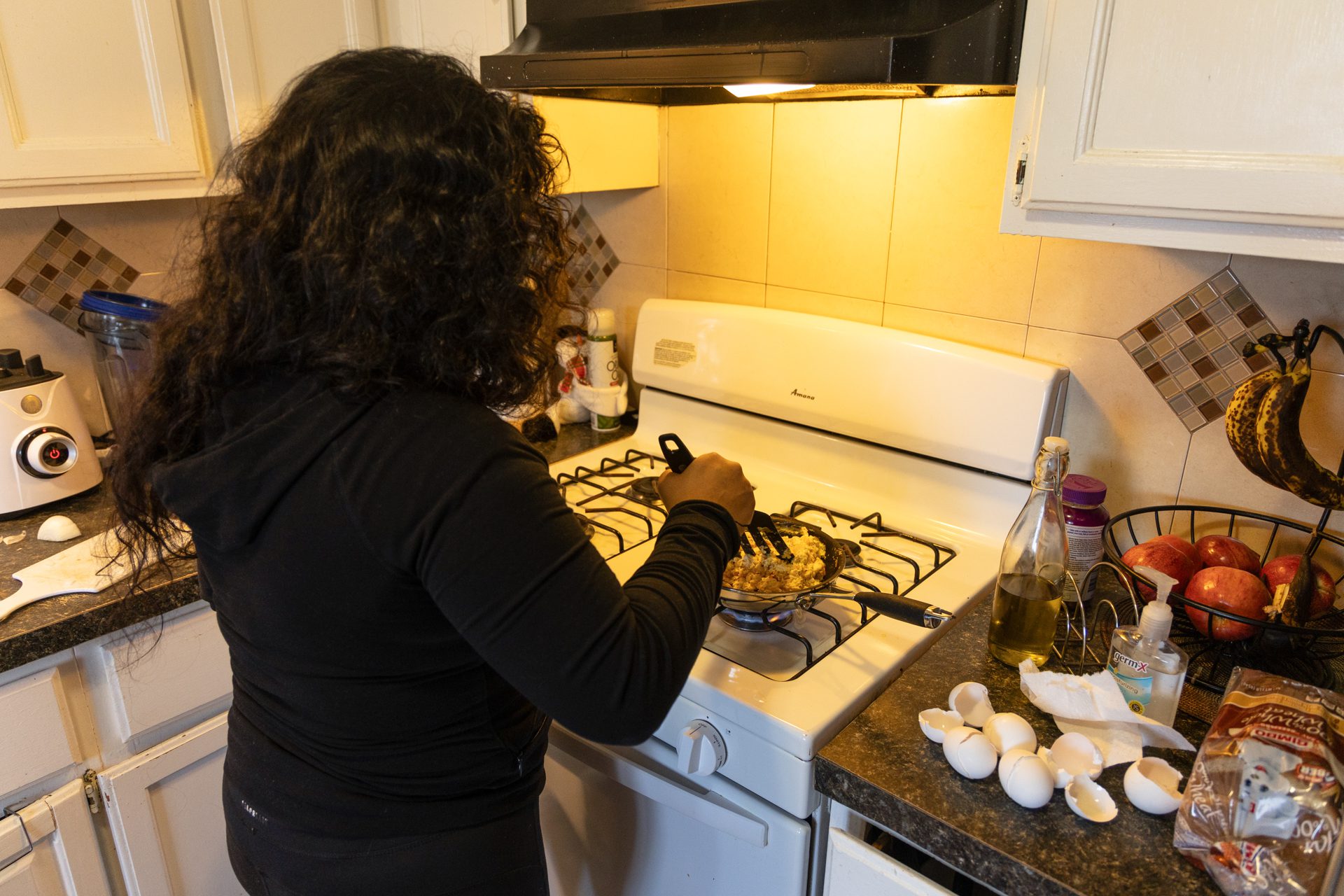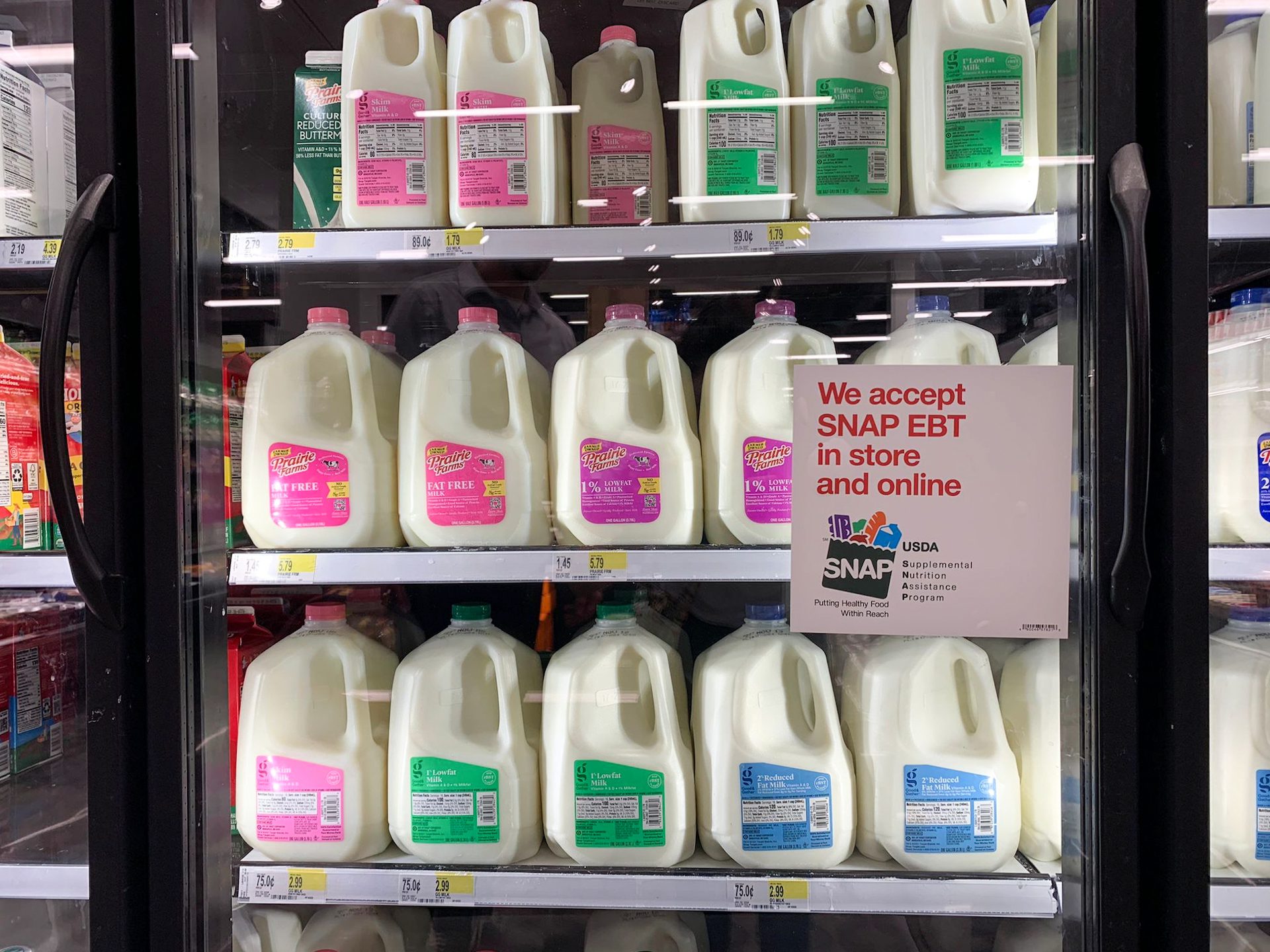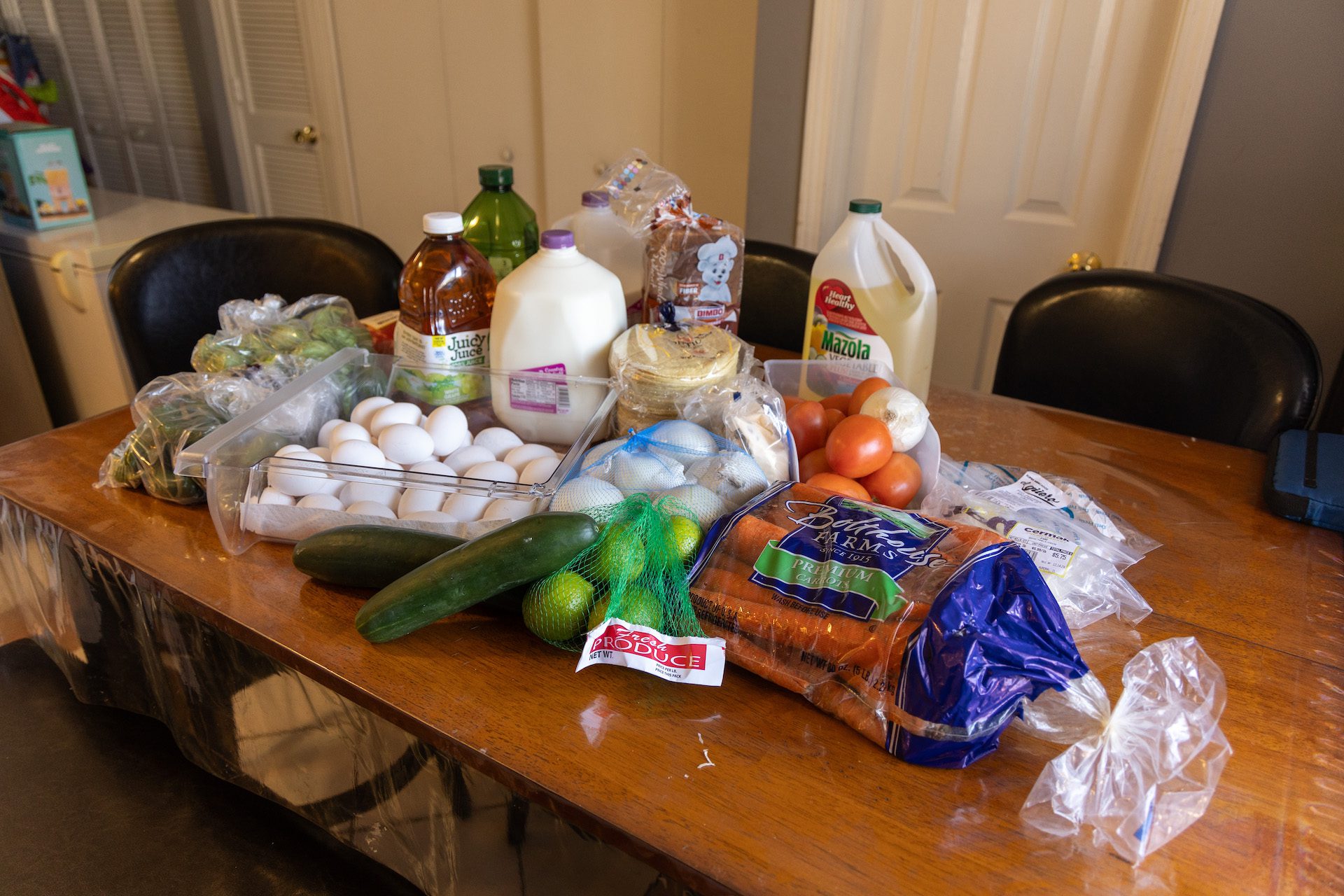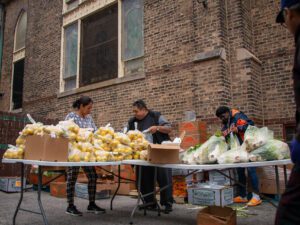 Oscar Gomez/Borderless Magazine
Oscar Gomez/Borderless MagazineWith rising grocery costs outpacing SNAP benefits, families in DuPage and Kane counties are cutting back amid inflation concerns.
Eggs are an essential ingredient in albondigas, a meatball soup. They help keep the meatballs from falling apart, but Karina has had to leave them out lately.
“Eggs could be another meal,” said the mother of three, whose ages range from 2 to 11. She asked to be identified by only her first name due to privacy concerns.
Karina works part-time in construction and has felt the sting of increasing grocery prices. She’s tried to adjust her shopping by purchasing off-brand items, cutting back on ingredients, and adjusting recipes to extend how long her groceries last.
News that puts power under the spotlight and communities at the center.
Sign up for our free newsletter and get updates twice a week.
Karina receives federal government assistance through the Supplemental Nutrition Assistance Program (SNAP), also known as food stamps. The program provides monthly funds to low-income families and individuals to help them buy groceries. The U.S. Department of Agriculture’s Food and Nutrition Services administers SNAP and said it expects participants to use their own resources to cover 30% of their grocery costs. But SNAP recipients like Karina say they have to cover much more than that, even after tightening their budgets.
“The basic foods are too expensive,” said Karina, who now lives in Kane County, Ill. after immigrating from Mexico. “It’s too much.”
Karina is not alone. SNAP participants in many Illinois counties struggle to cover the cost of groceries using their benefits. DuPage, Woodford, Marshall, Cook, Lake and Kane were the worst counties in Illinois, according to a national analysis by the nonprofit policy research organization Urban Institute.
Read More of Our Coverage
SNAP recipients living in these counties, like Karina, face the largest gaps between the maximum SNAP benefits granted and the average cost of a modestly priced meal. The report found that the amount given to families through SNAP benefits is failing to keep up with the rising cost of groceries even after accounting for inflation.
“I think what we learn from [the report] is there’s still more variation in the cost of living than gets reflected in the benefit levels,” said Diane Whitmore Schanzenbach, an economist at Northwestern University who also sits on the board of the Greater Chicago Food Depository, a nonprofit focused on addressing hunger in Chicago.
According to Schanzenbach, these food affordability gaps exist because of the higher cost of living, the way the government calculates families’ food assistance needs and the rise in grocery prices.
While the amount of funds granted through SNAP varies from family to family, the maximum amount of SNAP benefits is the same in all counties across the U.S., even while some counties are more expensive to live in than others. The program makes exceptions for Hawaii and Alaska, where recipients get higher maximum benefits.
SNAP maximum benefit levels are adjusted annually in June and take effect in October. The plan is based on the cost of the Thrifty Food Plan, which estimates the cost of “a nutritious, practical, cost-effective diet prepared at home.”
“I think it is fair to be critical of those gaps,” said Schanzenbach. “[SNAP] is insufficient in so many places.”
According to the Urban Institute analysis, meal costs in some counties outside of Illinois are more than 75% higher than the maximum SNAP benefit. Leelanau County, Michigan, participants face about 83% higher meal prices than the maximum benefits, and the New York County average meal price is double the maximum benefit.
Schanzenbach said SNAP benefits are supposed to help cover the family’s grocery costs. Still, the program hasn’t been able to keep up with increasing inflation even after adjusting for inflation in 2022 and after inflation slowed down in 2023.
According to a spokesperson for the USDA’s Food and Nutrition Services, which manages SNAP, the agency expects SNAP recipients to spend about 30% of their own resources on food.
“SNAP is the most powerful, far-reaching tool available to ensure people with low incomes — regardless of their background — can purchase healthy food,” said the spokesperson. “USDA remains dedicated to continually improving SNAP, ensuring it effectively serves the 42 million people who rely on SNAP benefits to put food on their tables.

The agency’s spokesperson said SNAP participants are eligible for other food assistance programs besides SNAP in USDA’s Food and Nutrition Services, including the Special Supplemental Nutrition Program for Women, Infants and Children, also known as WIC.
Karina also receives WIC benefits, which provide low-income pregnant, postpartum, and breastfeeding women and children up to age 5 with specific food items like milk and baby food.
Republican leaders and advisors to President-elect Donald Trump are eying cuts in food stamps to offset the cost of Trump’s proposed tax cuts.
The SNAP program helped almost 2 million Illinois families buy food this year — the most of any other Midwestern state. According to an analysis by the Illinois Policy Institute, a nonprofit research organization, this is an increase of over 13.5% from five years prior.
Read More of Our Coverage
In the face of high food costs, local nonprofits are stepping in to help fill these gaps in food access. In DuPage County, Cristobal Cavazos helps about 12 families receive $50 for groceries or prepurchased food weekly through Immigrant Solidarity Dupage.
“You see that the brochures of DuPage with golf courses, high-rise hotels in Oakbrook, and the mall, but the reality here is much different here on the ground,” said Cavazos, executive director at Immigration Solidarity Dupage.
While Immigrant Solidarity DuPage and other organizations are helping families facing unprecedented events like health issues, evictions and other issues, Cavazos said, the county should intervene. “[The county] is not sharing its wealth with its own workers,” he said.
DuPage County did not respond to Borderless Magazine’s request for comment.
Karina pointed out that while her income hasn’t increased, the cost of groceries has, making it challenging to stick to her grocery budget. She said the amount she receives through SNAP has not changed since she first applied two years ago.

Every month, she receives about $450 in SNAP benefits, which used to last her about three weeks. Over the last year, it’s only covered about two weeks’ worth of groceries, even after cutting back on her grocery list. She estimates she’d need at least $800 monthly to cover grocery costs for her family.
“We’re all seeing this increase in food prices, so I thought [SNAP benefits] would also increase,” Karina said.
They did not, so until it does, she said she will continue to get creative with recipes and rethink the more elaborate breakfasts she likes to make her kids on the weekends. “It’s just too expensive,” she said.
To learn more about how to apply for SNAP and other food benefit programs, click here.


